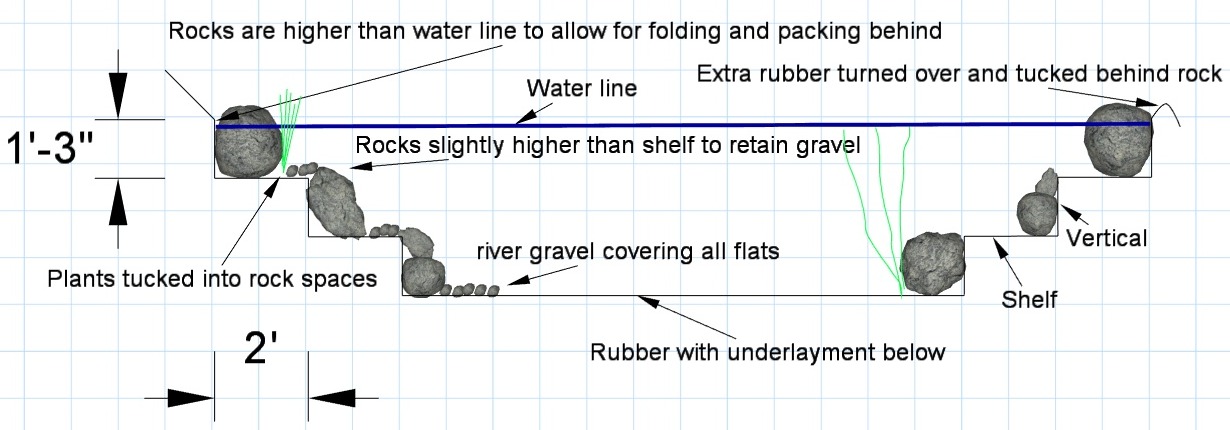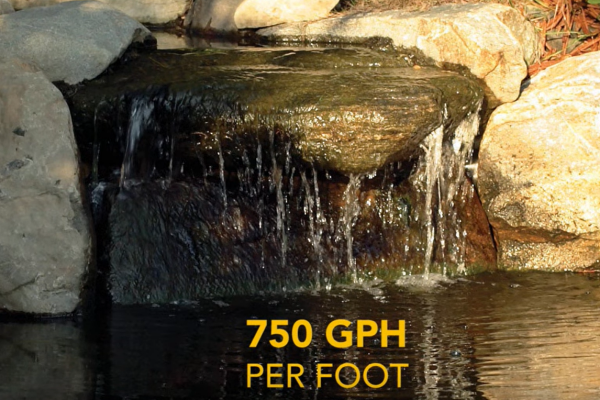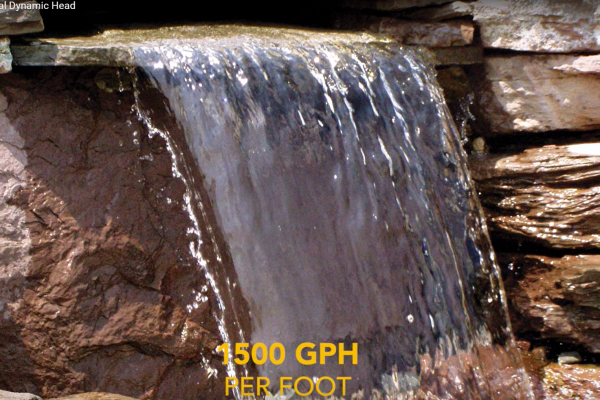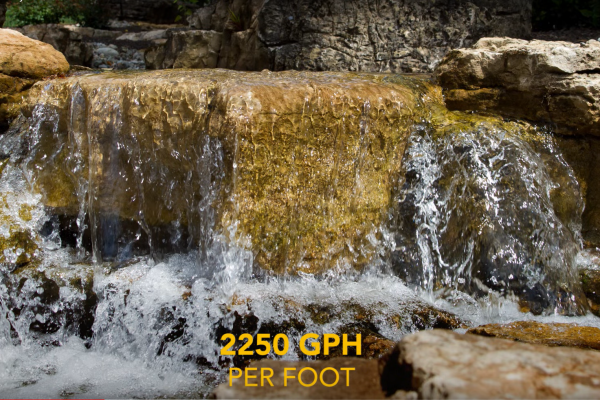Pond Construction Help
Pond Construction Calculator
Use the form on the left to help determine the proper products needed for your pond construction project. Please be aware that every construction project is different and I do not know your particular situation. This calculator is set up how I calculate my pond projects. I would encourage you to use some common sense and judgement when ordering products.
ENTER ALL MEASUREMENTS IN FEET.
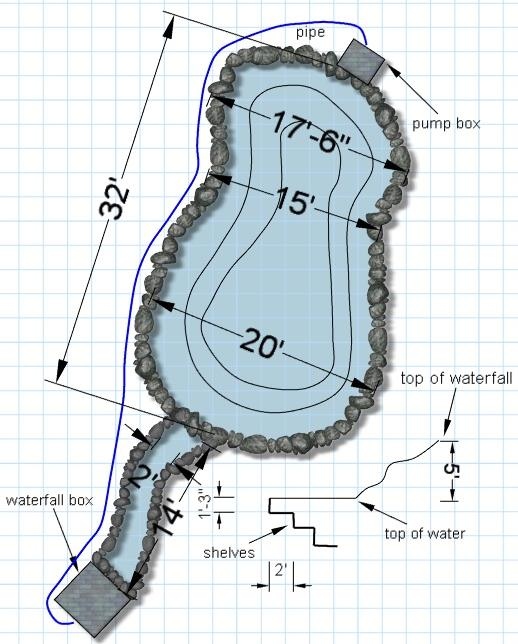
The results given by this calculator will always be more product than the standard boxed pond kits. That is simply the difference between a well thought out, creative pond and a pond kit based on cheapest price. I’ve installed a few ponds using the “boxed kits” and I can tell you that the kits give you the absolute bare minimum amount of product needed to build the size that it says on the box, certainly no more.
Building with these kits is very frustrating and more difficult than it needs to be. One of the worst things that can happen when you are building a pond is to get to the final stages of rock installation only to realize that you are a bit short on rubber or pipe.
Having done this professionally for so long, I have learned that a bit of extra pipe and rubber is exactly what you need when you are building your pond.
It is certainly not the cheapest way to build a pond, but having a bit extra will give you the flexibility that you will need to create a wonderful and unique pond and waterfall that looks the way you want it to look and, it will save a you ton of frustration.
If you are planning to move enough dirt, rock and rubber to build a pond, you need to be willing to spend a few extra bucks on materials. Pond building is difficult enough, without running out of product at a critical moment.
Recommended Pump = 3000 gph
Total Dynamic Head using 2″ Pipe = 9.9′
Now for the big discussion – the pump. This is always the toughest choice when it comes to a pond project because it is so subjective. The calculator is showing us a recommended gallons per hour because we chose to have a 2′ wide stream. It is also telling us, based on the pipe length, head height and fittings, that our total dynamic head will be almost 10′. As discussed earlier in the pond gallons section, some people would tell us we should use a 10,000 gph pump based on our water quantity. That is quite a discrepancy between 3000 gph and 10,000 gph!
Let’s dig into this a bit deeper. If we are truly only going to have 2′ of water width in our stream, then we could probably get away with running an economical mag-drive pump, but if we want to widen that out a bit, or if we are using some larger more dramatic rocks, we will need more water flow.
A few things to keep in mind when sizing your pump:
– A smooth surface will make less water look like more.
– A rough surface will make more water look like less.
– The larger your waterfall rock is, the more water you will lose below the rock rather than over it.
– Creating “narrows” can make less water look more dramatic.
It’s really pretty simple, the narrower the passage, the deeper the water will be passing through it.
Check out the pictures below for reference
I used the calculations of gph and total dynamic head on our Pick a Pump page to figure out the options below.
Pump Option #1 Stick with the Plan
If I wanted to stick with the current plan, I ‘d probably buy the Matala Geyserflow G-4200 which would give me a bit more than 3000gph or maybe the Atlantic TT5000 pump which would be more efficient and would will provide me with just about the right amount of flow given my 2′ stream width.
Option #2 Go a Bit Bigger
If I wanted to step it up a bit, I’d likely increase the stream width to 3′, which will increase my recommended pump to 4500 gph and my total dynamic head to almost 20′. For this setup, I would likely choose the Matala Gysermax GM-6200 pump which will give me a bit more flow to work with and allow for more creativity when laying out my stream.
Option #3 Go Big
If I really wanted to see some waterflow, I could up my stream width to 4′ which would increase my pump size to 6000gph which would give me 26.5′ of dynamic head if I use 2″ pipe. If you look at the pick a pump page, you will see that it is darn hard to find a pump in that range. So, if I really wanted that 6000 gph flow, I might want to use 3″ pipe, which would lower my dynamic head to 8.3′ in which case I could use the Atlantic TT9000 pump. This would really be some nice water flow and would allow for some really great fluctuations in stream width and maybe even a split stream effect.
How to use the Calculator
This calculator assumes that the pond being calculated is similar to the one pictured here.
It assumes that you are using some sort of pump box (skimmer) and some sort of a waterfall box. Which type of box or who manufactured it is really irrelevant, since the installation is basically the same.
If you are planning a more advance installation, you will want to adjust accordingly. For instance, if you were installing a wet well intake and/or a wetland filter, many of these calculations would be considerably different.
Even if you are doing a standard install using boxes, there are some key things that would make these calculations inaccurate.
- Having the stream/waterfall and pump box located somewhere other than across from each other on the length of the pond
- Having the pipe routed somewhere other than right along the edge of the pond.
- Using very large rocks in the stream will require wider stream rubber.
For practice, I suggest that you input the measurements from this sample pond to see that your results match what I have listed below.
If the measurements were entered properly, the sample pond should require the following:
- Gallons of Water = 10902.10
- Pond Rubber = 42.5′ x 30.5′
- Stream Rubber = 8′ x 20′
- Underlayment = 1820.31 sq ft
- Pipe = 66′
- Recommended Pump = 3000 gph
- Total Dynamic Head using 2″ Pipe = 9.9′
Okay, now that you have your pond and material spec’s, here is what you do with them:
Gallons of Water = 10902.10
Many pond people will tell you that you should size your pump based on the amount of water in your pond. They will tell you that you should circulate the amount of water in your pond every hour. I won’t argue that it would be nice to have more circulation – who doesn’t like a big waterfall? But, at some point, this advice will put you in the poor house. For our example pond above, I would need a 11,000 gallon per hour pump which would force me to have a much wider stream, 3″ pipe, a larger pump box, check valve and fittings and it would cost somewhere in the $100/month ballpark to run the pump. Many pond owners will install a bottom aeration system to provide more circulation to make up for the lack of water flow. This also gives them the ability to run the bottom aerator over winter when they may not want to run the pump.
Pond Rubber = 42.5′ x 30.5′
Stream Rubber = 8′ x 20′
We now need to consider our rubber measurements to figure out the most economical way to buy rubber based on common roll sizes. For this pond, I might consider a 30′ x 50′ roll. It is six inches short on the width, but it would be easy to tweak my pond size a bit when I laid it out to accomodate this. I could also lose six inches in the length of my pond without even noticing it, so that would leave me with a piece of rubber 8′ x 30′ which should be plenty plus extra for the stream. Extra rubber can be put to use under big boulders to protect the liner. Also, since this pond is irregularly shaped, I can probably save a few extra feet on the narrow side of the pond which will allow me to widen out my stream near the bottom.
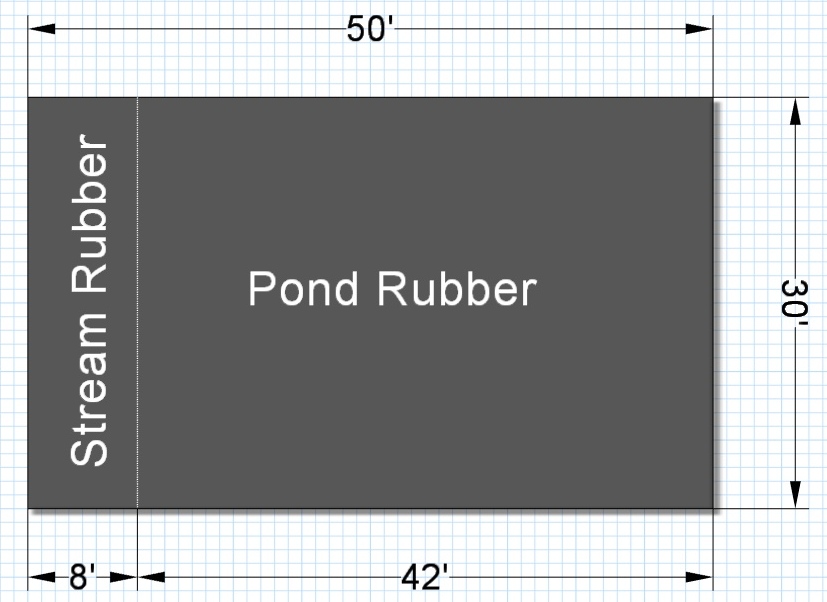
Underlayment = 1820.31 sq ft:
It may be tempting to try to skip the underlayment, but it is well worth the money. It will help to protect your rubber from rocks and debris below the liner and can be used under heavy rocks to protect the top of the liner also. For this pond I’d probably get one 12′ x 100′ roll and one 6′ x 100′ roll. That will give me 1800 sqft to work with and the 6′ roll will be nice to work with in the stream.
Pipe = 66′:
For this pond I’d buy a 50′ roll and a 25′ roll of 2″ flex pvc and a coupler. I’ll have a bit extra, but I won’t need to worry about skimping. I don’t think there is any way I could get it done with just a 50′ roll unless I moved the stream and or pump box.
Final Thoughts:
For this pond, my gut feeling would tell me to go with option #2. I’d probably go for around 4500 gph and I’d use 2″ pipe. If I wanted more flow than that, I may consider installing a second pump and second pipe. Two pumps and pipes let’s you avoid the extra cost of the 3″ pipe, gives you a backup pump in case one fails and allows you the flexibility to run one pump most of the time and only run two when you are there to enjoy it.
Also, keep in mind that any changes we make to stream width and pump size will effect our rubber requirements. Any time that you make changes to the claculator, make sure that you check the figures for changes.
General Pond Layout Cross Section
Note that for simplicity’s sake, I made all shelves 2′ wide and all verticals 1’3″ tall in this cross section and the sample pond above. In reality I would vary the depth and width of the uppermost shelf and always keep it at 1′ or less in depth to make it more suitable for planting marginal aquatic plants. I would also vary the width of all of the shelves depending on the rock that I choose. I would likely make the bottom vertical 1’6″ to give my pond a bit of extra depth.
